Ghalieh Meygoo -Persian Shrimp in a Tamarind and Cilantro Sauce is a traditional dish from Chuzestan in southern Iran on the Persian Gulf and a kind of curry with shrimp, tamarind, tomato paste, fresh cilantro, fenugreek leaves, garlic, and lots of aromatic spices. Sometimes Persian cooks add curry and chili powder to the dish.
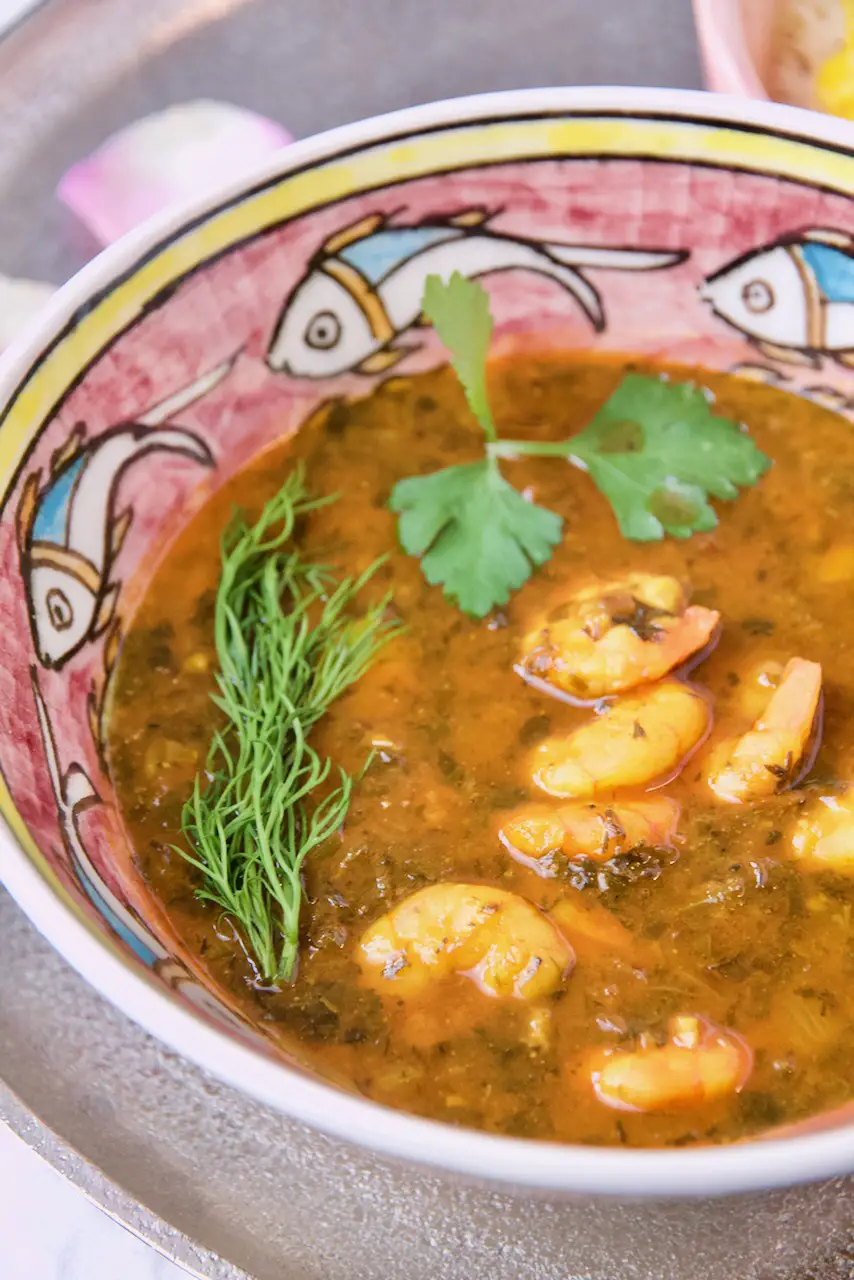
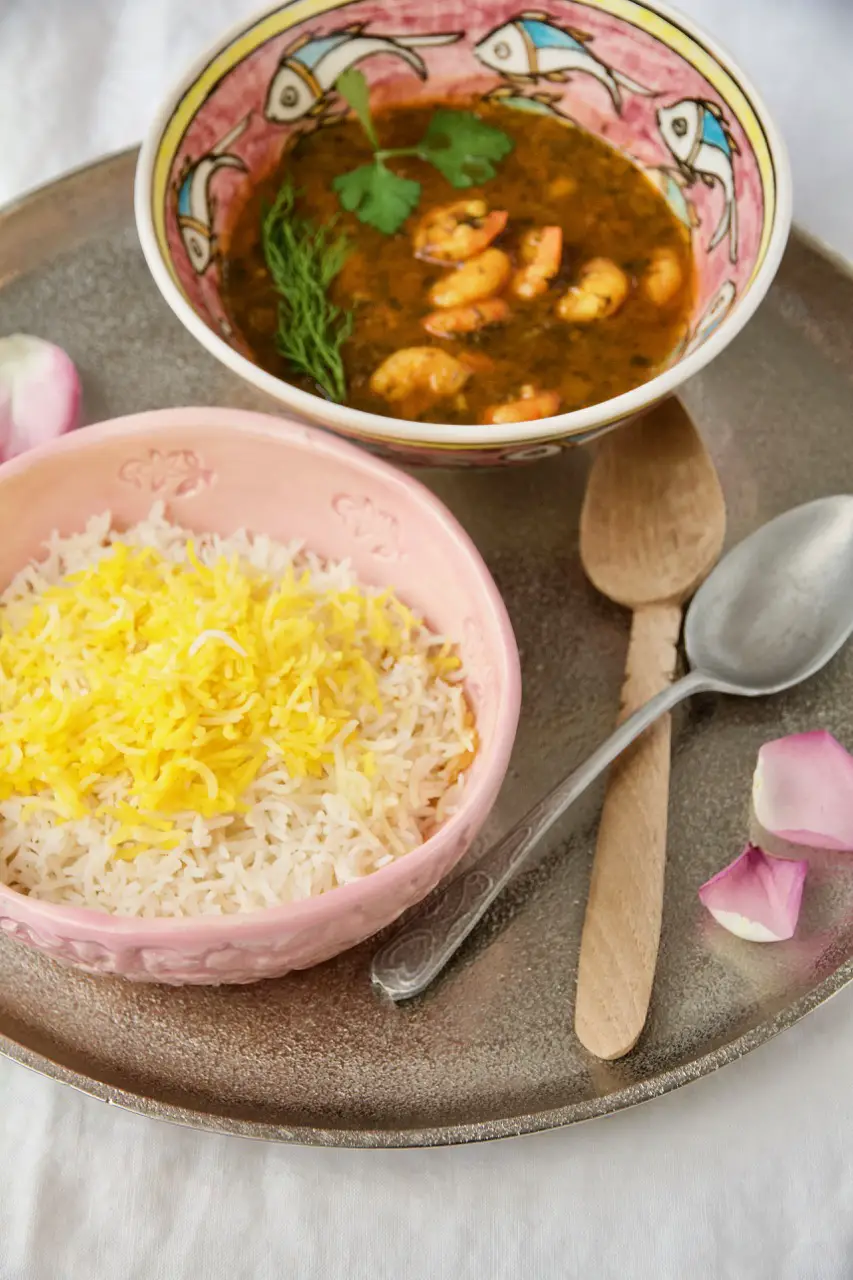
PREPARATION OF GHALIEH MAHI – FISH CURRY
Fish dishes are popular in the north of Persia at the Caspian Sea or in south at the Persian Gulf. The recipes are very different from each other as there is a distance of 2500 km in between. The rest of Persia likely serves mahi dudi (smoked fish). Sabzi Polo ba Mahi – a Persian herbal rice that is eaten with stuffed trout with oranges, especially on Nowrooz.
Ghalieh Meygoo tastes well with my Sabzi Polo – Persian herb rice with butter saffron rice crust. You can also make this dish with a white fish fillet. The fish should have a firm consistency that you can toss and which will retain its shape when cooked in the sauce and should not fall apart. Fillets of perch or sea bass, red snapper, tilapia, salmon, or sole are best suited for this purpose.
TYPICAL FISH SPECIES FROM THE PERSIAN GULF (Khalije Fars)
The Persian Gulf has a very high salt content. The typical fish species here are saltwater fishes as
- Hamoor – Grouper
- Sangsar – Grunzer or also called Schweinsfische, because they actually produce grunting noises
- Sorkhoo – Red Snapper
- Kafe Dast Mahi – Flounder
- Mahi-e Halwa – Sole
- Mahi-e Shoorideh – Umberfisch
- Shir Mahi – Mackerel
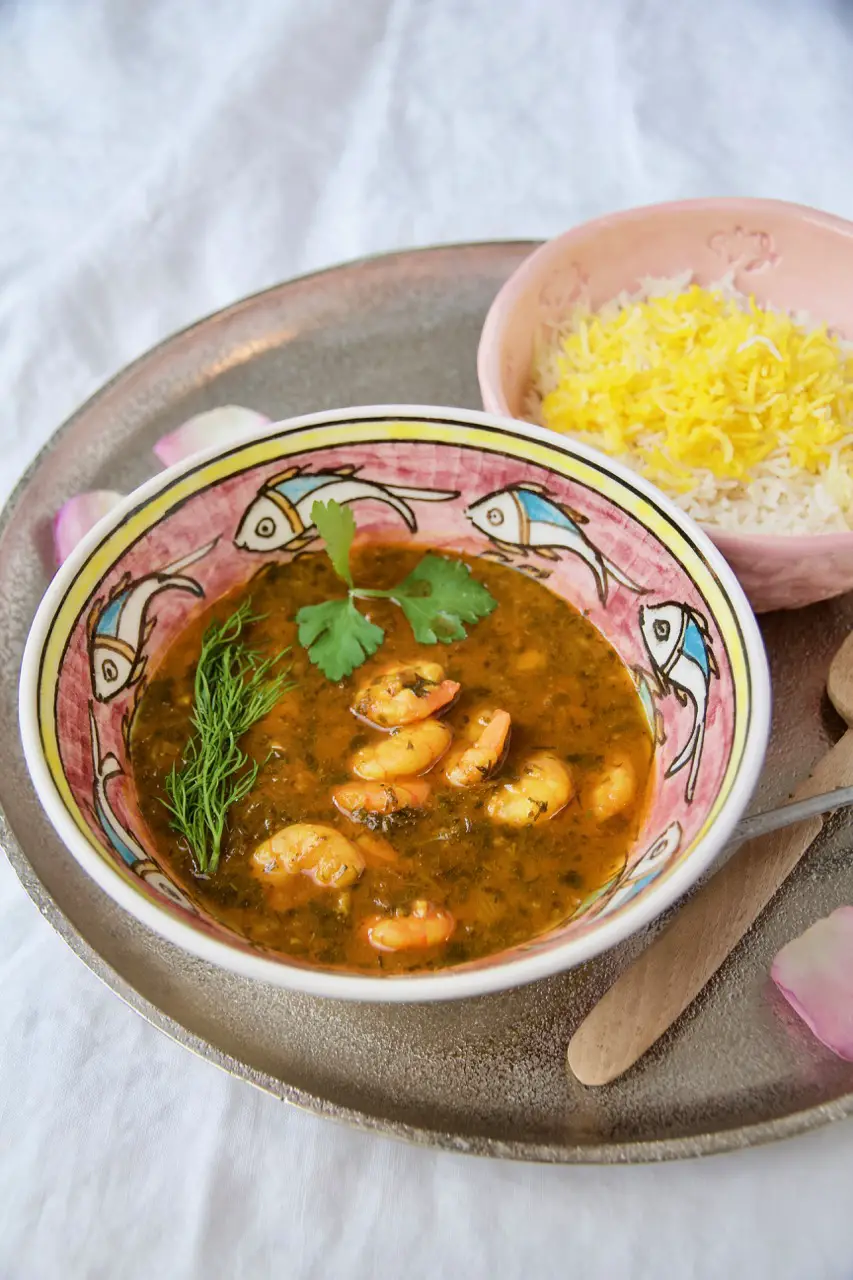
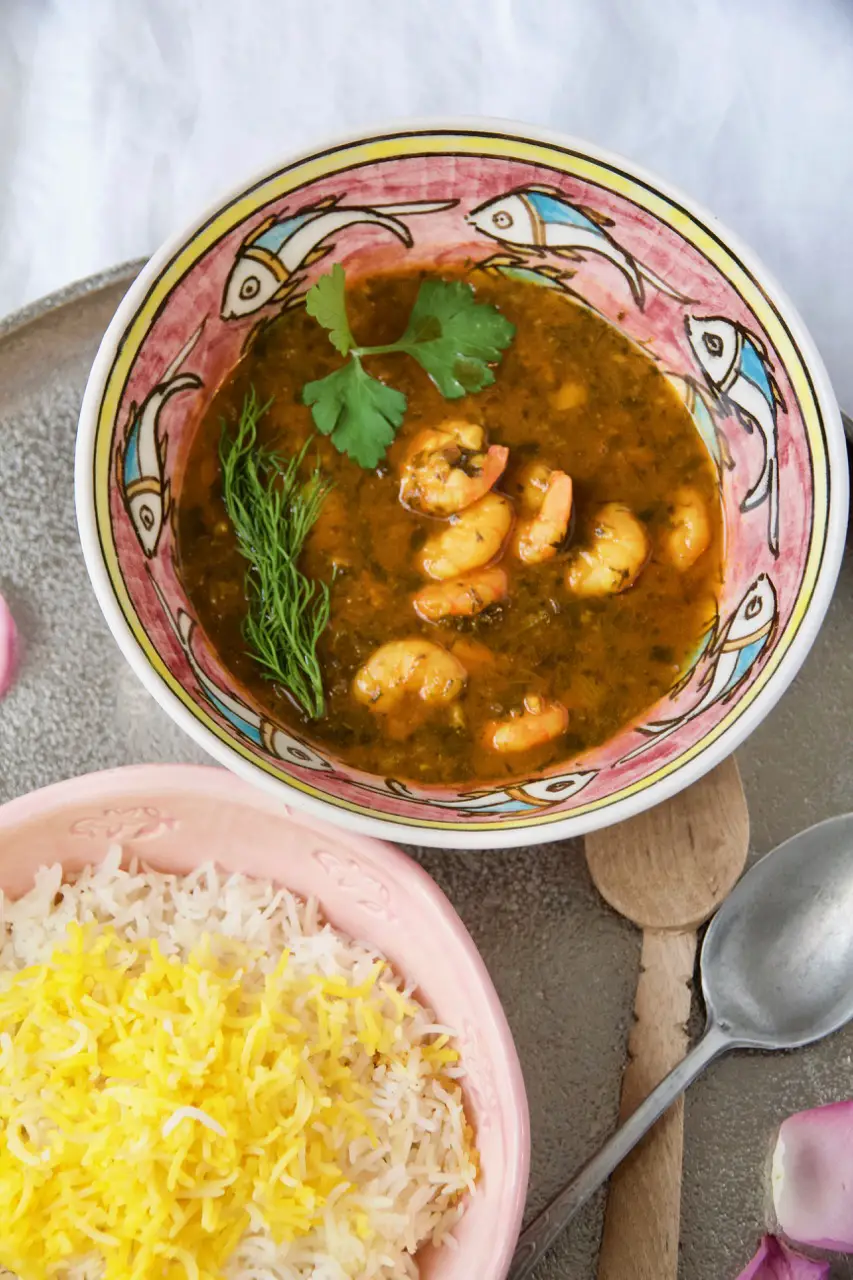
FENUGREEK LEAVES
For this dish, you need fresh fenugreek leaves. These are hard to find here in Germany. So I usually use dried fenugreek leaves, which I buy from my Persian grocer. Do not miss the fenugreek leaves, as they provide the specific aroma in Ghalieh Meygoo.
TAMARIND (Tamreh hendi)
Tamarinds are the fruits of the tamarind tree. They can be from 5 to 20 cm long. Inside the pods are the seeds covered by a brownish-to-black fruit pulp. We need this fruit pulp for my Ghalieh Meygoo recipe. Tamarind tastes mildly sweet and sour, pleasantly fruity, and slightly tart. The tamarind is also known as “Indian date” or “Sauerdattel”. Indians use it as a spice for chutneys or jams. In the Middle East, a lemonade-like soft drink made with. In China, on the other hand, a set of vinegar tastes milder. Tamarind is a healthy alternative to vinegar or lemon juice and gives the Ghalieh Meygoo the typical, sweet-sour fruity taste. Tamarinds are available as a paste to buy pith or extract.
TAMARINDS PASTE
Tamarind paste or marrow is very concentrated and contains sugar, which you can mix with water and add directly to the dish.
TAMARIND AS BLOCK
I use all the tamarinds with shells and seeds as a block. Incidentally, I also like to snack on them in between, so I cut a corner into the bag and suck out the tamarind. For Ghalieh Meygoo, I break off about 30 grams, soak them in boiling water for 10 minutes, squeeze them through a fine plastic sieve, and use the drained liquid.
TAMARIND HEALTH BENEFITS
Tamarind has an antibacterial and mild laxative effect, which helps with a sore throat. Use it to stimulate the appetite, strengthen the stomach and strengthen digestion. Tamarind has a heating effect on our bodies. One hundred grams of tamarind contains 11% iron, making it especially important for vegetarians and vegans. It also contains minerals such as potassium, magnesium, phosphorus, calcium, vitamins B1, B2, and C, and a high-level vitamin D.
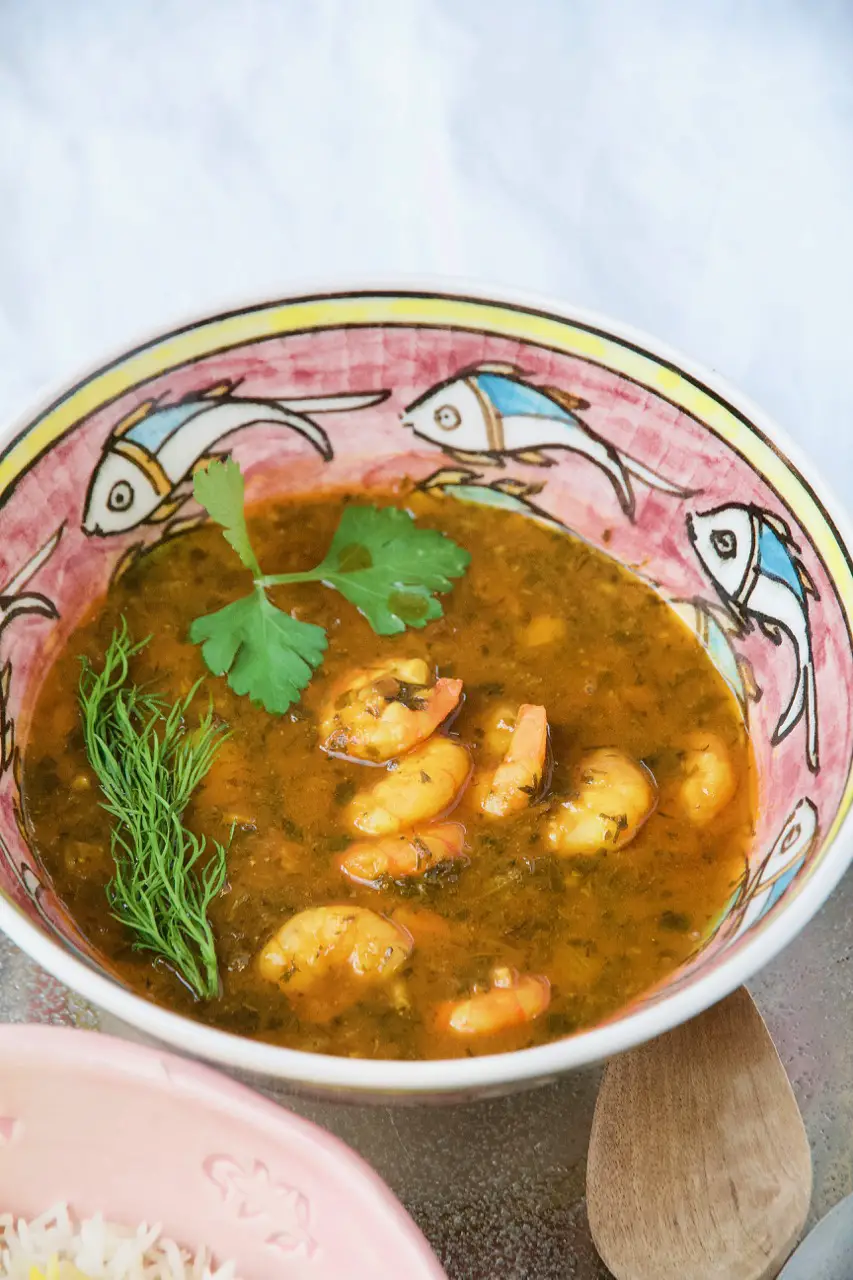
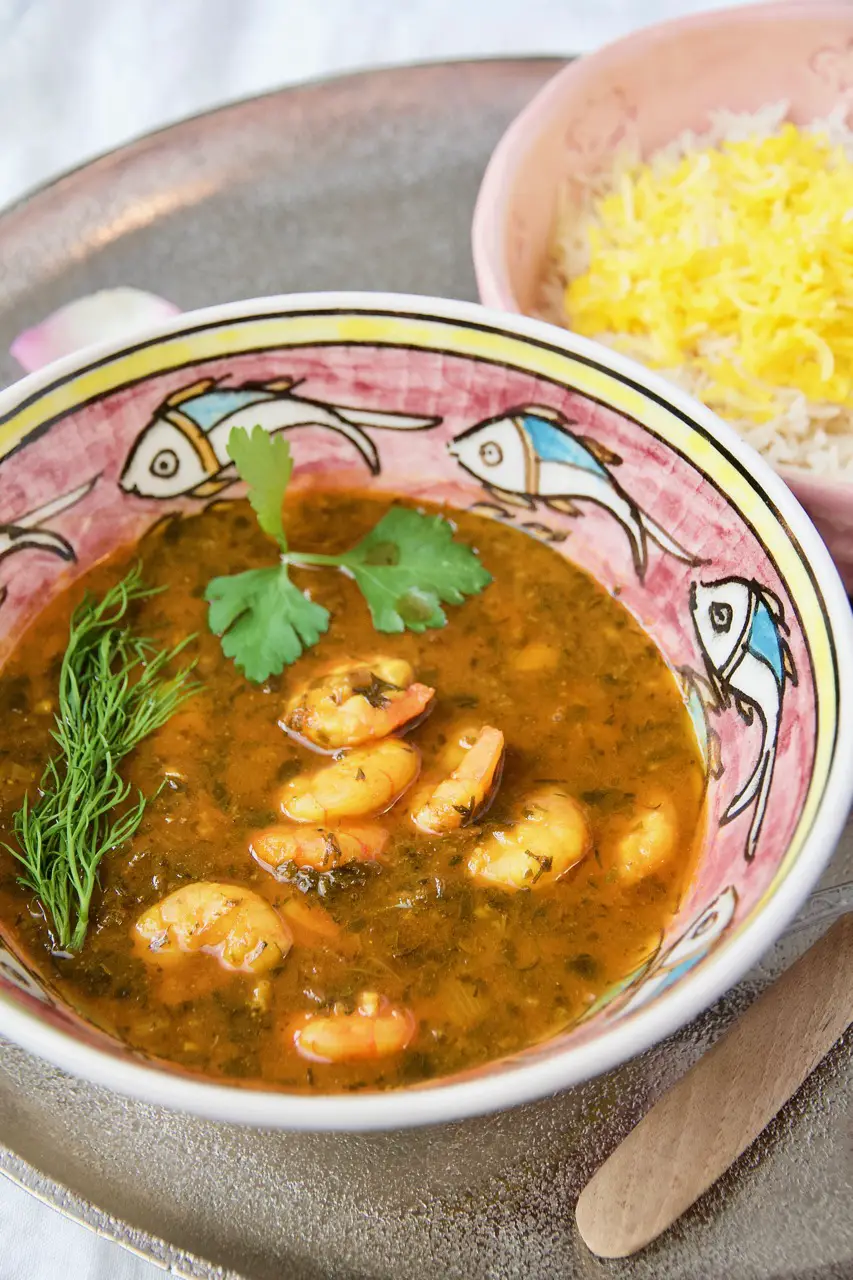
INGREDIENTS GHALIEH MEYGOO
30 g tamarind as block *
200 g fresh cilantro
3 tbsp oil
1 onion
4 cloves of garlic
1/4 tsp cumin whole *
1/4 tsp coriander seeds *
1/2 tsp Turmeric*
1/4 tsp Cayenne pepper *
2 tsp. Dried fenugreek leaves *
1 tbsp cornstarch
2 tbsp tomato paste
1 tsp of sugar
1 tsp salt
1 tsp pepper
500 g fresh shelled raw shrimp

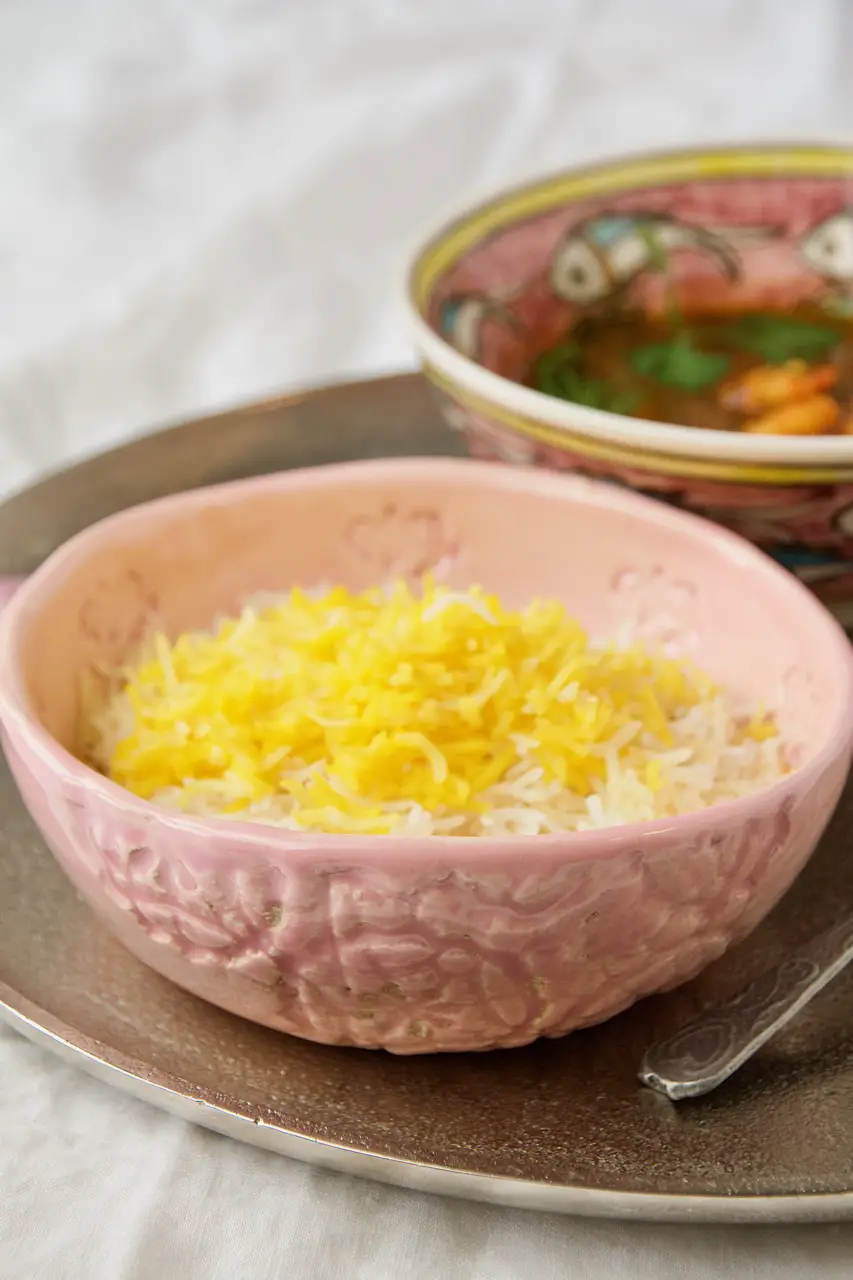
PREPARATION GHALIEH MEYGOO
Leave the tamarind in 60 ml of boiling water for 10 minutes,
strain through a plastic sieve, collecting the tamarind liquid.
Pick cilantro from the stems, chop finely and set aside.
Roast spices in a pan without oil and grind in a mortar.
Dice the onions and fry 1 tablespoon of oil, ground spices, garlic,
Add cilantro, fenugreek leaves and
fry for 10 minutes at medium heat.
Stir cornstarch with 2 tablespoons of cold water
until no more lumps are visible.
Add tamarind, spices, tomato paste, dissolved cornflour, 1/2 liter of water, sugar,
salt, pepper and simmer for another 20 minutes.
Add shrimp and cook for about 3 – 5 minutes in the sauce
until the shrimp are well done.
Serve with Persian rice.
BEFARMAYID!
Susan
The items marked with * are affiliate links, referral links. If you buy through this link, I get a small commission. The price stays the same for you and you can easily support my efforts. A big thank you ♥


Ghalieh Meygoo - Persian Shrimp in a Tamarind and Cilantro Sauce
Ghalieh Meygoo is a traditional dish from Chuzestan in southern Persia on the Persian Gulf and a kind of curry with shrimp, tamarind, tomato paste, fresh coriander, garlic and lots of aromatic spices.
Ingredients
INGREDIENTS FOR GHALIEH MEYGOO
- 30 g tamarind as block
- 200 g fresh cilantro
- 3 tbsp olive oil
- 1 onion chopped
- 4 cloves garlic
- 1/4 tsp cumin whole
- 1/4 tsp coriander seeds
- 1/2 tsp turmeric ground
- 1/4 tsp cayenne pepper
- 2 tbsp fenugreek leaves dried
- 1 tsp cornstarch
- 2 tbsp Tomatoe paste
- 1 tsp sugar
- 1 tsp salt
- 1 tsp black pepper
- 500 g fresh shelled raw shrimp
Instructions
PREPARATION GHALIEH MEYGOO
-
Leave the tamarind in 60 ml of boiling water for 10 minutes, pass through a plastic sieve, collecting the tamarind liquid.
-
Pick cilantro from the stems, chop finely and set aside.
-
Roast whole spices in a pan without oil and grind finely in a mortar.
-
Dice the onions and fry 1 tablespoon of oil, ground spices, garlic, add cilantro, fenugreek leaves and fry for 10 minutes at medium heat.
-
Stir cornstarch with 2 tablespoons of cold water until no more lumps are visible.
-
Add tamarind, spices, tomato paste, dissolved cornstarch, 1/2 liter of water, sugar, salt, pepper and simmer for another 20 minutes.
-
Add shrimp and cook for about 3 – 5 minutes in the sauce until the shrimp are well done.
Recipe Notes
Serve with Persian rice.
Have you cooked this or maybe another delicious recipe of mine? Feel free to leave me a comment below. If you tag your picture on Instagram with @labsalliebe and use the hashtag #labsalliebe, I won’t miss a post and will be happy to leave you a comment as well. Can’t wait to see your creations.
♥♥♥♥♥♥♥♥♥♥♥♥♥♥♥♥♥♥♥♥♥♥♥♥♥♥♥♥♥♥♥♥
This website is created by me in my leisure under proper use of coffee 🙂 If you like my posts I would be happy if you donate me one or a few cups of coffee!
Donate an amount of your choice via Paypal.
♥♥♥♥♥♥♥♥♥♥♥♥♥♥♥♥♥♥♥♥♥♥♥♥♥♥♥♥♥♥♥♥♥♥♥♥♥
Sign up for my newsletter and I’ll email you my latest recipes, travel reports and trends 1 at most 2x a week for free.

Your blog is awesome Soosan joon. I really enjoyed your recipes and beautiful photos. 💕🌸
Dear Negar,
thank you very much for your kind words <3
xoxo
Susan